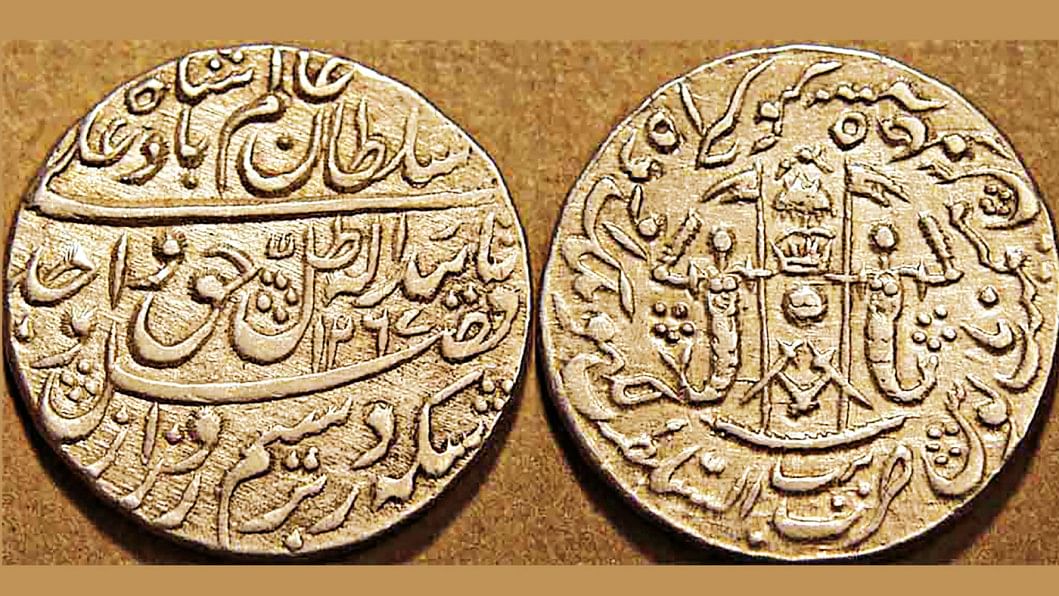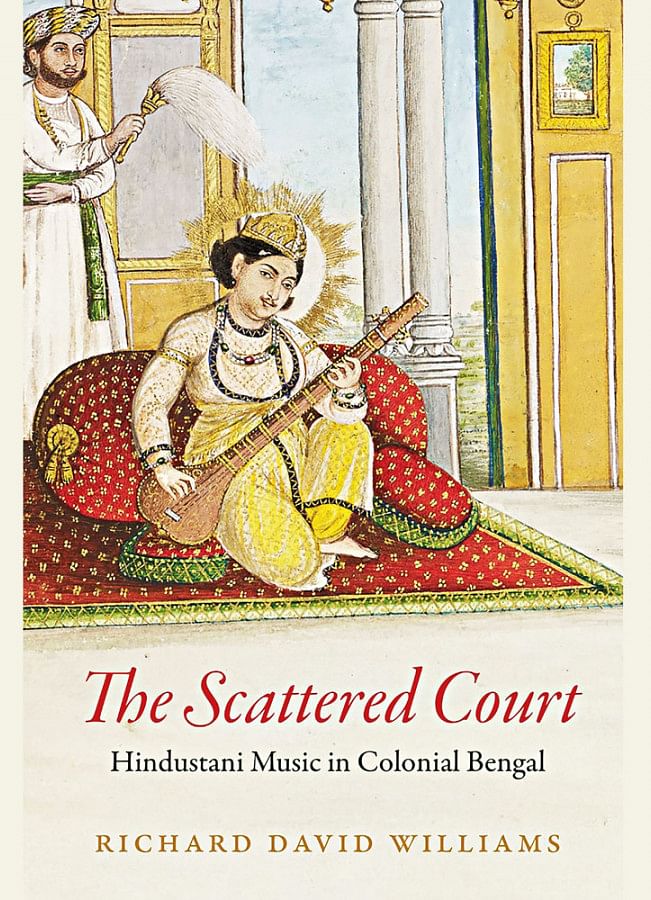The Weeping King: How Hindustani Music flourished in colonial Bengal
In 1870, a song collector from Calcutta called Nanda Lal Sharma flicked through the pages of his newly published book, Sangit Sutra. In the central pages was a thumri lyric, set to the rag Alhaiya Khamaj. Thumri was becoming an increasingly popular genre in Calcutta at that time, especially in the exclusive salons where the city's most celebrated courtesans would sing and dance to lyrics in Brajbhasha Hindi, dripping with emotion and longing.
This particular song stood out though. Nanda Lal had called it a "Lucknow thumri", and it was unusual because it was not interested in the conventional poetic themes of Krishna's seductions. This lyric was an evocative lament, which drew the listener westwards to the ill-fated city of Lucknow in northern India:
The kingdom is drowned in the salt of the harem:
His Majesty is going to London.
In every palace, his ladies are weeping:
Come to the alley, in the alley the cobbles weep.
Nanda Lal was confident that his readers would immediately recognise the character this lyric was referring to: the last king of Lucknow, Wajid 'Ali Shah (1822-1887), at the fateful moment when he was deposed by the East India Company, fourteen years earlier in 1856. The Nawab had travelled to Calcutta, where he planned to take a ship to London to plead his case and demand the return of his kingdom. However, his plans went awry. His ill health prevented him from embarking on his journey, so his mother, Janab-i 'Aliyyah, went instead on his behalf, and made it as far as Buckingham Palace. But just then the Uprising of 1857 rippled across northern India, and Lucknow itself was besieged and ruined. Wajid 'Ali Shah was declared the "Ex-King" and was told in no uncertain terms that he would never be allowed to leave Calcutta again.
The weeping in this song conveyed the outrage felt at the king's exile and humiliation, but also the trauma experienced in the aftermath of the Uprising that followed, and the more pervasive grief of succumbing to colonial rule.

I found this song when I was carrying out research for my book, The Scattered Court: Hindustani Music in Colonial Bengal, which came out this year. I was interested in what happened once Wajid 'Ali Shah settled in Calcutta, where he built a new court-in-exile in the southern suburb of Matiyaburj.
Music lovers and historians point to the three decades (1856-1887) he spent at Matiyaburj as being crucial to the evolution of classical music in Calcutta. He was a tastemaker and social commentators at the time, like Kaliprasanna Sinha, noted how the city's playboy babus were dressing like him and listening to Lucknow-style music. Yet while the Ex-King's influence on biriyani is well known, his contributions to music are more mysterious.
On the one hand, political histories remember Wajid 'Ali Shah as a failure: a decadent effete who lost control of his kingdom and paved the way for the British empire. On the other, in musical memory, he is remembered as a creative genius who ushered in new tastes and styles of music and dance that became fundamental components of Hindustani classical music as we know it today. Intriguingly, these two seemingly different narrative threads are interlaced. The British made it clear that it was the king's love of music and dance, his choosing notorious musicians for friends, and his overindulgence in creativity that made him unfit to rule.
That portrayal has persisted for over a century, although it has been challenged by writers like Sripantha, who wrote about Wajid 'Ali Shah in Bengali in the 1990s, and Satyajit Ray, whose movie, The Chess Players (1977), used extensive research to nuance the way we think about that period.
But how did people react to Wajid 'Ali Shah's arrival in his own time? How did his new court in Calcutta impact the local music scene? What did it mean for artists and intellectuals who were invested in the Bengal renaissance to simultaneously focus on music from north India, and songs in Hindi and Urdu?

The appearance of "Lucknow thumri" in a Bengali song book was not an anomaly. Many Bengali writers wrote about the cultural world of north India that had landed on their doorstep, and many music students flocked to Matiyaburj to find a prestigious ustad. This was not a one-way relationship. Although he is remembered as the embodiment of all things Lucknow, Wajid 'Ali Shah also took great interest in the music and dance of Calcutta, especially the songs of local street performers. He wrote numerous musical sketch comedies, featuring water carriers, cleaners, and khemta dancing girls. Khemta was a popular, risqué dance at the time that revolved around the dancer's jerking hips. The king was entranced and had the style taught to the female performers in his court, and even wrote his own songs for it in a mixed Bengali-Hindustani.
The court of Matiyaburj was all but destroyed following the death of the king in 1887. However, there are many records available which allow us to reconstruct the court and imagine the music and dance that happened in its rooms. The image of the king constructed in British colonial archives and legal reports is complicated by the version of him that features in Bengali memoirs and Urdu music treatises. The king even built his own printing press and published his own writings in Urdu that document in minute detail the musical experiments he concocted in exile.
To really appreciate the subtleties of what happened over those thirty years, we need to go back and consider a significantly longer period. In the mid-eighteenth century, the courts of Murshidabad, Bishnupur, and Burdwan attracted music masters from northern India who ended up settling in Bengal when they found patrons and students. The rulers of these kingdoms aspired to the prestige and cultural cachet of the Mughals and Rajputs further west, so invested in artists who knew a transregional form of exalted court music rather than focus on local, regional, and Bengali styles. This is quite striking as, in today's world, there is a much greater focus on Bangla gan: yet this was a later, more modern development, urged on by pioneering intellectuals like Rabindranath and his generation.
Musicians from these courts migrated to Calcutta in search of new sources of income and places to perform. In the early nineteenth century, there was a hunger for good quality art music, yet the scene was very mixed and the city did not have a reputation for exceptional artists, who still tended to congregate in northern India, as in Rampur, Delhi, Lucknow, and Banaras.
This hunger was sated from the 1850s onwards, when a celebrated entourage of musicians and dancers from Lucknow descended on Calcutta to accompany Wajid 'Ali Shah. These artists went on to make new connections in the city, performing across a network of rajbari aristocratic households, teaching at new academies and music societies for bhadralok music students and enthusiasts, and ultimately plugging into the brand new gramophone recording industry.
Examining the movement of musicians and dancers in this period challenges some core ideas that have come to shape our sense of South Asian music history for this period. We tend to think of a dramatic break or rupture between the world of Mughal courts and colonial cities, and often see 1857 as sounding the death knell of aristocratic patronage. The culture of Lucknow is thought to have died out, yet the survival of the court in Bengal suggests a more complicated legacy. Some musicians went on to secure new patrons among the Bengali elites of the city and became part of their apparently modern enterprises, while others continued to work for royal courts through to the mid-twentieth century, often finding a balance between new agendas with older conventions, spaces, and aesthetics.
Women navigated these transitions too, but their contributions in this period have largely been forgotten. One of the subtle but long-lasting effects of colonialism in north India was a gradual shift in the way musicians were represented. By the end of the nineteenth century, male musicians were increasingly represented as the celebrities of a modern music industry. Male artists increasingly identified themselves as representatives of gharanas – semi-hereditary lineages of musicians that cultivate characteristic techniques and musical styles. While gharana musicians did take on female disciples who became professional musicians in their own right, this was largely a twentieth-century development: the rhetoric and imagery of the gharana ultimately revolves around genealogies of charismatic, male ustads, leaving a sense that Hindustani music was primarily a man's domain.
A major exception to the rule is the courtesan: we have abundant collections of images of dancing girls, baijis, and tawaif, who are increasingly recognised as artists and musicians in their own right. The problem with this version of history is that it creates an artificial sense of two spheres of music-making: one patriarchal and respectable (though occasionally condescending to teach women), the other feminine and potentially reprehensible (since courtesans were not expected to marry, and thus remained outside mainstream society). The implication is that until the twentieth century—which saw the rise of middle class female musicians—a woman who engaged with music must have been a courtesan, or attached to her salon.
Since women's culture was scrutinized and sanitized by male reformers, women who loved and patronised music have also been muted in the historical record. Reconstructing Matiyaburj revealed a wide range of women who were invested in musical projects. Khas Mahal, the king's most senior wife, composed volumes of song lyrics and poems while her many female attendants sang for her six nights a week. Because there was so much scrutiny over women's involvement in the arts, her love of music was quietly folded away and rarely discussed in public. Wajid 'Ali Shah also designed a network of classes for women in his court to study music and dance, based on his Parikhana (House of Fairies), a similar training academy he had built in Lucknow. While Matiyaburj was an exceptionally musical court, these were not isolated anomalies, and it seems far more women were writing songs, singing, and playing instruments than we would assume from today's vantage point.
Retracing how Wajid 'Ali Shah forged a musical relationship between northern India and Bengal reveals how much of the musical archive from this period has been discarded and forgotten. Matiyaburj became an innovative and deeply influential forum, but also connected with a longer history of transregional movement and conversations about music. When Bengali music lovers wept over songs from Lucknow at the end of the nineteenth century, their tears can be traced back to the emotional stylings of Wajid 'Ali Shah, but also to a longer history of Bengali engagement with the sound worlds and art music of northern India.
Richard David Williams is Senior Lecturer in Music and South Asian Studies at SOAS University of London and author of The Scattered Court: Hindustani Music in Colonial Bengal.

 For all latest news, follow The Daily Star's Google News channel.
For all latest news, follow The Daily Star's Google News channel. 



Comments